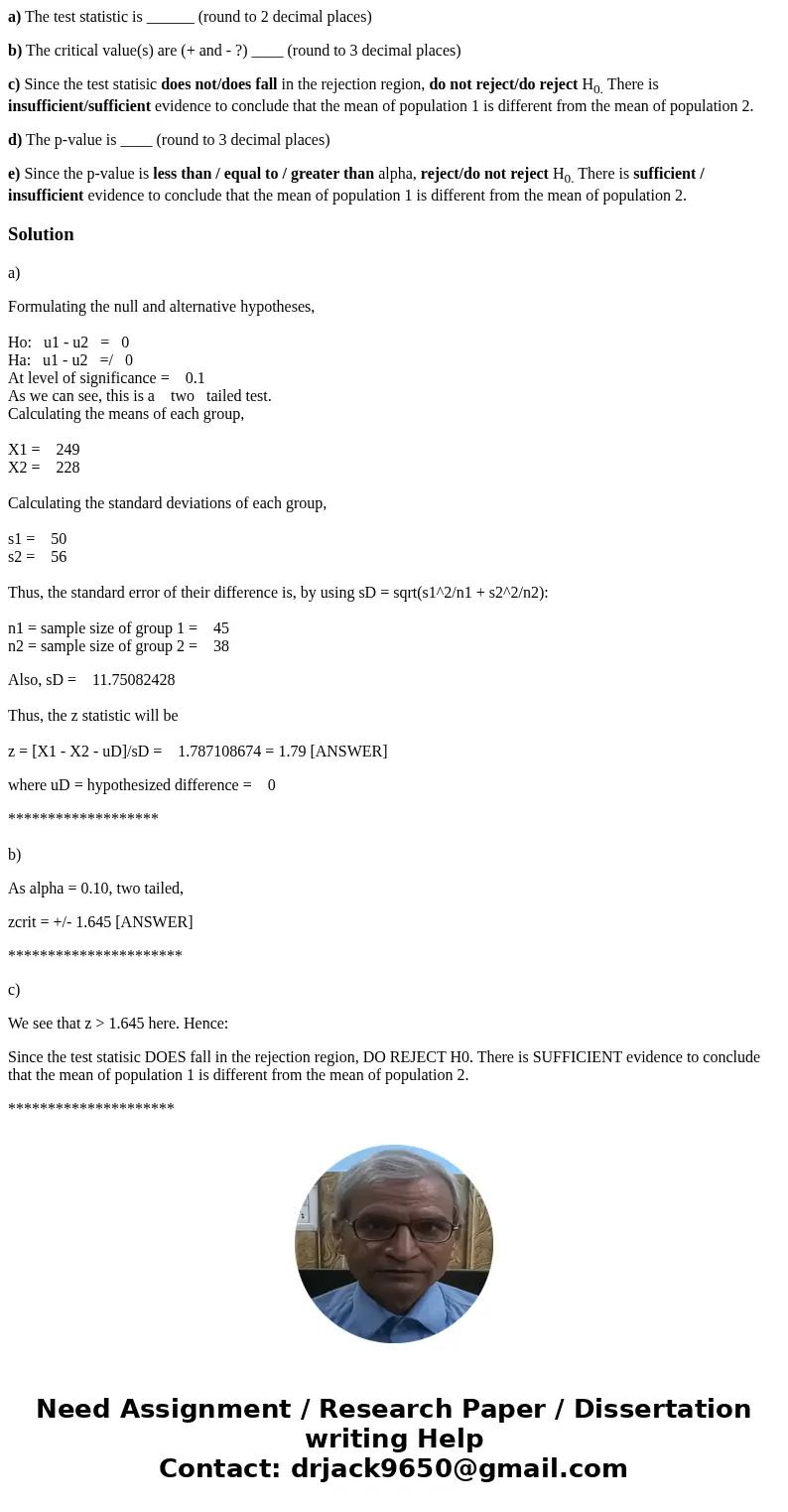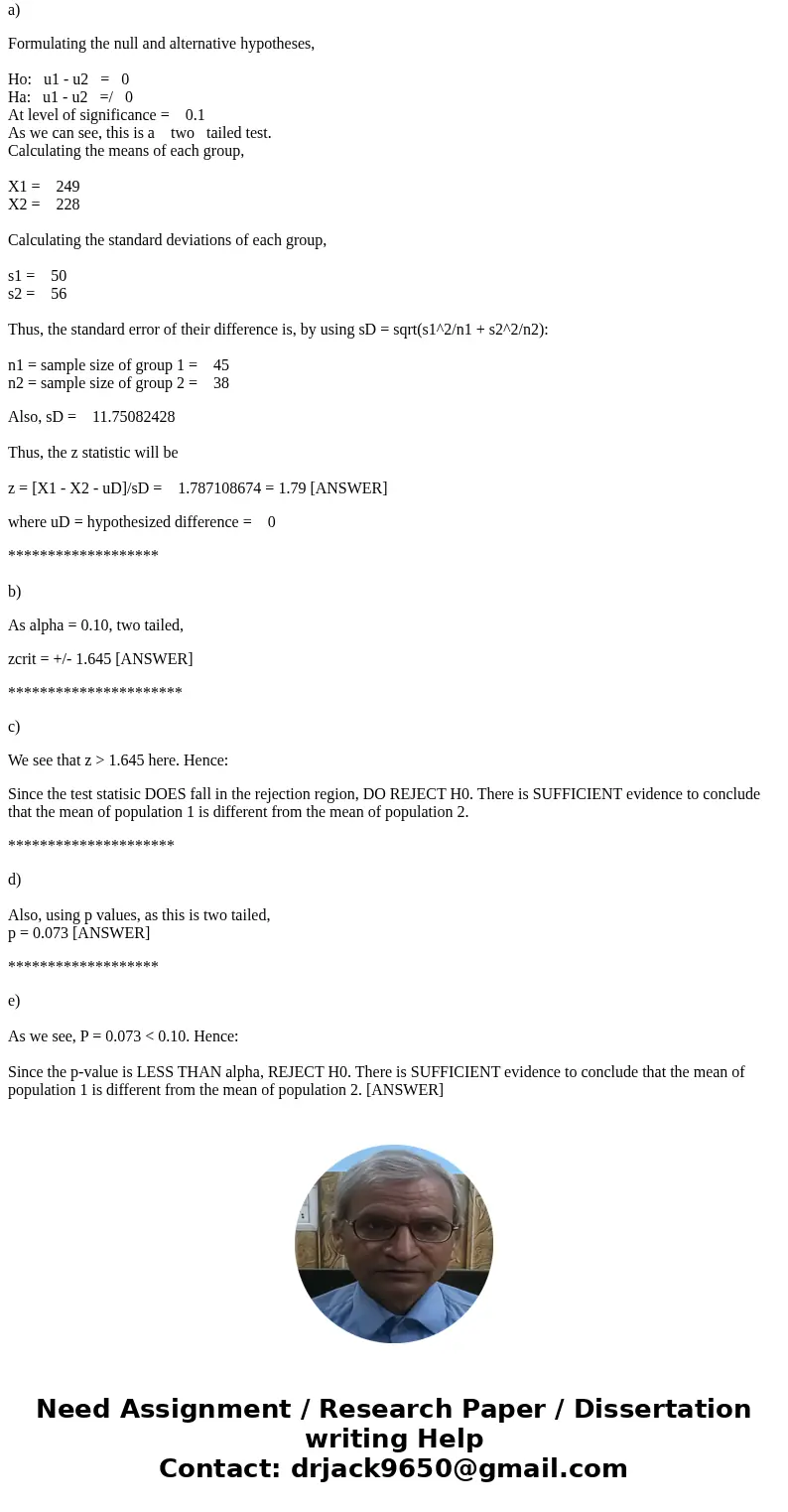a The test statistic is round to 2 decimal places b The cri
a) The test statistic is ______ (round to 2 decimal places)
b) The critical value(s) are (+ and - ?) ____ (round to 3 decimal places)
c) Since the test statisic does not/does fall in the rejection region, do not reject/do reject H0. There is insufficient/sufficient evidence to conclude that the mean of population 1 is different from the mean of population 2.
d) The p-value is ____ (round to 3 decimal places)
e) Since the p-value is less than / equal to / greater than alpha, reject/do not reject H0. There is sufficient / insufficient evidence to conclude that the mean of population 1 is different from the mean of population 2.
Solution
a)
Formulating the null and alternative hypotheses,
Ho: u1 - u2 = 0
Ha: u1 - u2 =/ 0
At level of significance = 0.1
As we can see, this is a two tailed test.
Calculating the means of each group,
X1 = 249
X2 = 228
Calculating the standard deviations of each group,
s1 = 50
s2 = 56
Thus, the standard error of their difference is, by using sD = sqrt(s1^2/n1 + s2^2/n2):
n1 = sample size of group 1 = 45
n2 = sample size of group 2 = 38
Also, sD = 11.75082428
Thus, the z statistic will be
z = [X1 - X2 - uD]/sD = 1.787108674 = 1.79 [ANSWER]
where uD = hypothesized difference = 0
*******************
b)
As alpha = 0.10, two tailed,
zcrit = +/- 1.645 [ANSWER]
**********************
c)
We see that z > 1.645 here. Hence:
Since the test statisic DOES fall in the rejection region, DO REJECT H0. There is SUFFICIENT evidence to conclude that the mean of population 1 is different from the mean of population 2.
*********************
d)
Also, using p values, as this is two tailed,
p = 0.073 [ANSWER]
*******************
e)
As we see, P = 0.073 < 0.10. Hence:
Since the p-value is LESS THAN alpha, REJECT H0. There is SUFFICIENT evidence to conclude that the mean of population 1 is different from the mean of population 2. [ANSWER]


 Homework Sourse
Homework Sourse